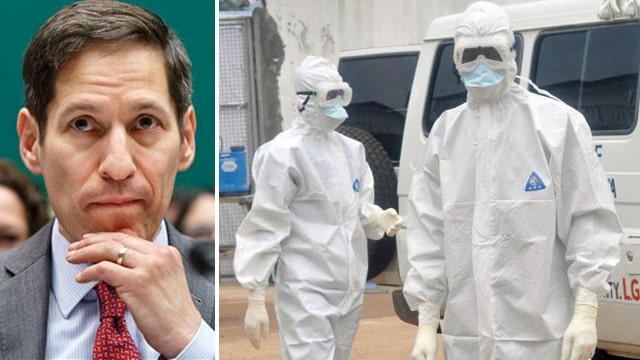Is Ebola airborne?
No, Ebola is not airborne. It can be, however, placed in the droplet-contact transmission category. It is important to understand the difference between the two:
Airborne transmission: Occurs when infected droplet particles are discharged into the air and remain for long periods of time. Droplet particles can survive for long periods of time outside the body and are resistant to dry surfaces. Infected particles can enter via the lungs. Influenza is an example of an airborne disease.
Droplet-contact transmission: Occurs when infected, larger droplets of mucus or saliva are discharged into the air and come into direct contact with the nose, mouth or eyes. This type of transmission is rare and only occurs when proximity is very close. Such droplets are too large to stay in the air for long periods of time and quickly settle.
The Ebola virus can only be contracted through bodily fluids including blood, vomit, feces, urine, sweat, breast milk and semen.
Can you get infected if someone with Ebola sneezes or coughs on you?
Virologists say that if an infected person were to sneeze or cough on you and droplets of mucus make contact with your mouth, eyes or nose, it is possible that the disease can be transmitted -- although, this is rare and you would have to be within very close proximity. This mode of transmission is mainly a concern for those who are at highest risk of contracting the disease – health care workers and family members in very close contact.
Could Ebola become airborne?
Based on the available scientific evidence, it is highly unlikely. For Ebola to become airborne, its mode of transmission would have to change. Ebola is an RNA-based virus; it undergoes rapid mutations and does not have an error-correcting mechanism like DNA-based viruses do. The RNA genome would have to undergo enough mutations to allow to virus to be resistant to the drying effects that currently don’t allow it to live for very long outside the body. However, there is no way to speculate because while viruses are expected to mutate, mutations are random – there is no telling what effect they’ll have. (This is also why the virus changing its mode of transmission is highly unlikely, but not impossible.)
The chances of a virus evolving to a new mode of transmission are extremely small. There is no evidence that a virus causing infectious disease in humans has ever changed its mode of transmission. Human immunodeficiency virus (HIV) for example, has been around for more than 100 years, and has a very high mutation rate – yet is still only transmitted by bodily fluids. The Ebola virus is believed to be about 10,000 years old, has a mutation rate 1/100 that of HIV, and also remains to be transmitted only by bodily fluids.
Research suggesting Ebola could be airborne
Last week, Dr. David Sanders – a virologist from Purdue University – said he found through his research that the Zaire strain of Ebola – the strain responsible for the current outbreak; the most deadly - has the capability to become airborne and enter a person’s lungs. Published in the Journal of Virology in 2002, Sanders and a group of researchers identified a biochemical feature in the protein coat of the Ebola virus that is similar to several bird viruses - suggesting birds may be able to spread the virus to humans.
“While bird transmission of Ebola is by no means certain, the resemblance among all these viruses should encourage health officials to be on guard for it,” Sanders noted.
In 2012, Dr. Gary Kobinger and a group of Canadian scientists observed the transmission of Ebola from pigs to monkeys. Six pigs were infected with the Zaire strain of the Ebola virus and placed in close proximity, but separated by a wire barrier with four cynomolgus macaques monkeys. Results showed that all of the animals were infected with Ebola.
The 2002 study simply has very limited data. In the 2012 study, the distance in which the animals were separated was actually 7.87 inches and there is no evidence of how transmission between the animals actually occurred, although Kobinger has said he suspects it was through droplet transmission. Therefore, both studies’ conclusions were based on assumptions.
So, should we be worried that Ebola is or will become airborne? No. On the other hand, the fact that the Ebola virus is undergoing rapid mutations – 300 so far in the 2014 outbreak – is one of the many reasons why it is critical to get the epidemic in West Africa under control. Although the chance of the virus changing its mode of transmission is highly unlikely, these rapid mutations we are currently seeing could make the disease harder to diagnose, treat and find an effective vaccine to cure.

